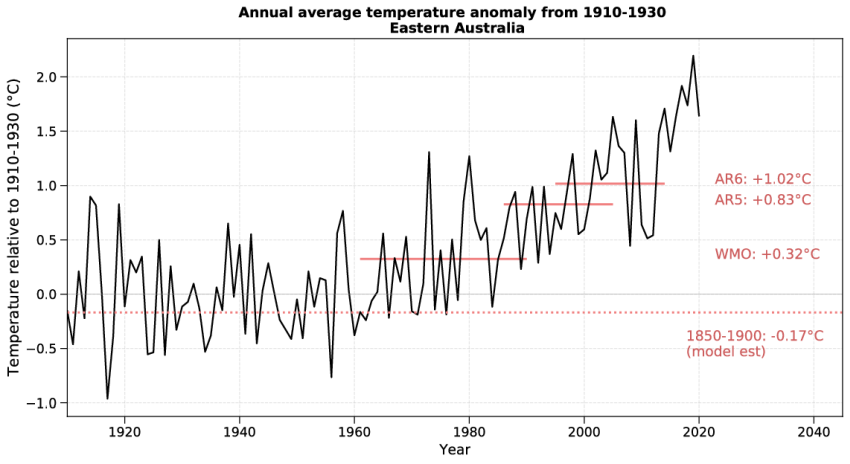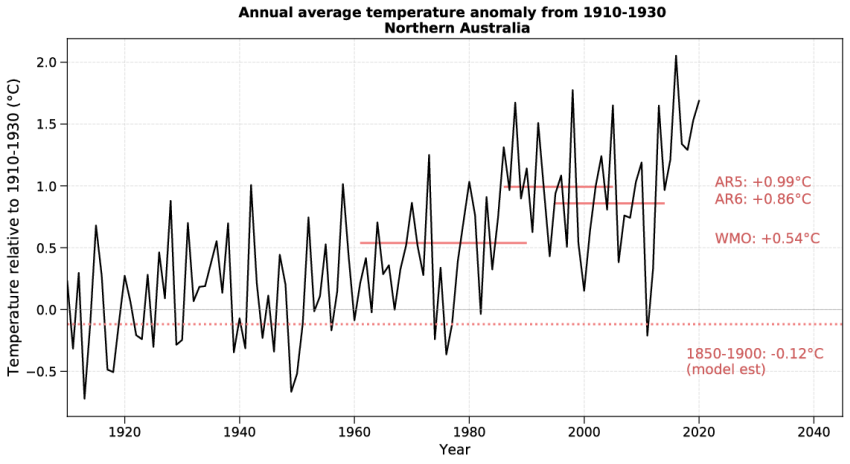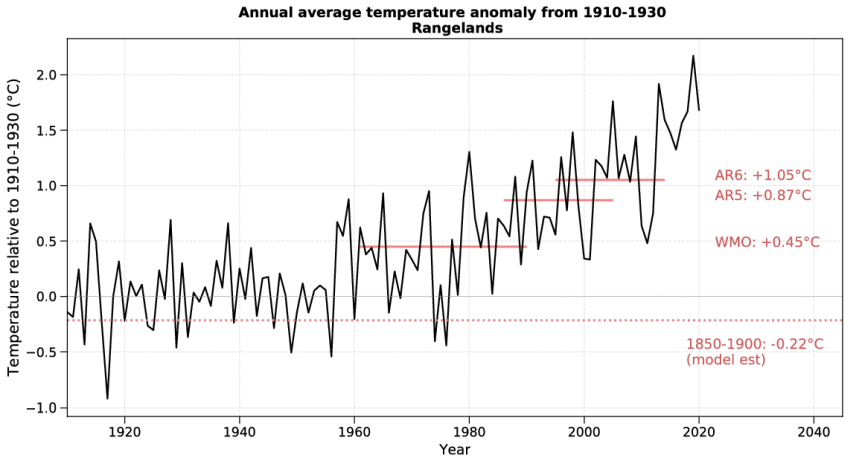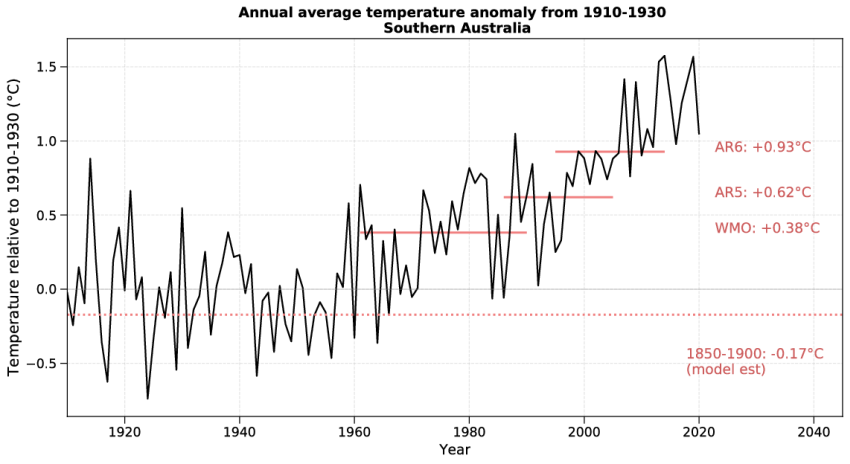Climate Change in Australia
Climate information, projections, tools and data
Australian Warming
How much has Australia warmed since pre-industrial times?
Estimated warming of Australia in 1910 to 2019 in observations is 1.44 ± 0.24 °C (Trewin et al. 2020 ). Change from the baseline (reference period) chosen to represent the pre-industrial climate of 1850–1900 up to the recent decade of 2011-2020 using model outputs blended with observations (see Technical note 1) is around +1.6 °, and the ratio to global warming (land and ocean) is around 1.4x (Global warming is around +1.1 °C), and is similar to the global land-only change.
The 1.5, 2, 3 and 4 °C global warming levels are defined relative to the ‘early industrial’ baseline of 1850-1900. In order to understand what the warming levels mean for our region, we need to be able to estimate how much the globe, Australia and regions within Australia (e.g. states and territories) have warmed since this baseline.
No one lives in the global average, we care most about change at individual locations, especially ones we directly experience. Some regions have warmed much more than the global average, and other areas less. Australia and all states and territories except Tasmania have warmed by slightly more than the global average (land and ocean) but much less than some places in the world.
Download Technical Note 1 - warming in Australia since 1850-1900:
Global context
Global gridded datasets are intended to give a global perspective and broad spatial coverage at coarse spatial resolution. The global land area has warmed more than the ocean: around 1.1 °C for the globe including land and oceans and around 1.6 °C for global land without oceans, measuring change as 2010–2019 minus 1850–1900. Results are similar in all the major global datasets, the Cowtan and Way (2014) dataset gives us complete global coverage:
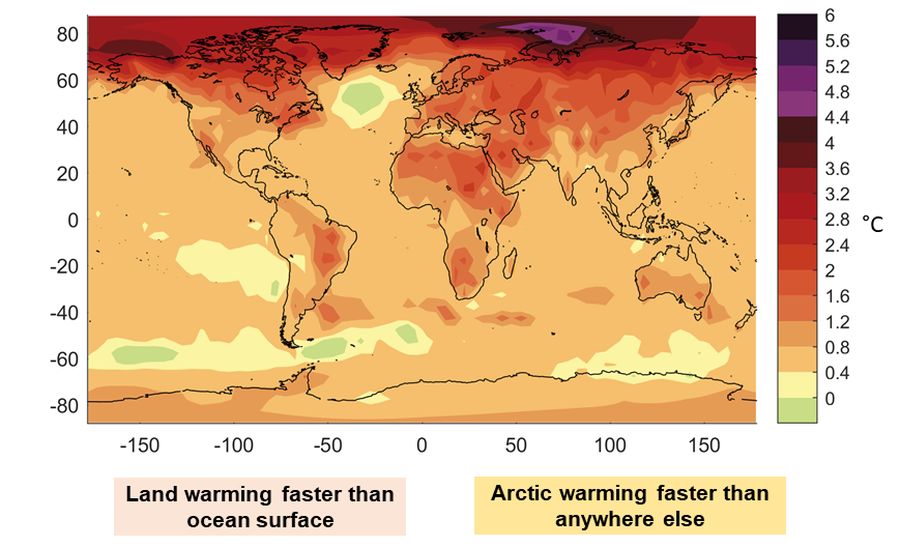
National Climate Records
For looking in detail at Australian land temperature, the standard high-quality climate record from the Bureau of Meteorology is the Australian Climate Reference Network for Surface Air Temperature version 2.1, ACORN-SATv2.1 (Trewin et al. 2020). The Bureau of Meteorology provide ACORN-SATv2.1 data from 1910 and calculate change in annual average temperature by fitting a straight line to the 1910–2019 data (values given below each graph).
We need to estimate temperature change from 1850–1900 to examine global warming levels. To do this, extra datasets can be brought in, and change is best measured using the difference between periods or a curved line rather than a straight line:
- Data coverage and quality is poor before 1910, so an estimate of change from the 1850–1900 baseline will be inevitably imprecise. Various methods to estimate change from this early period are possible, each with their strengths and limitations – see technical note 1 for more detail. All methods produce an estimate of change between 1850 and 1910 of between 0.0 and +0.4 °C in Australia.
- A curved line (a 41-year Lowess filter) fits the extended series we tested better than a straight line. An example here is the ACORN-SATv2.1 series blended with early historical records for 1860-1910 from Ashcroft et al. (2012).
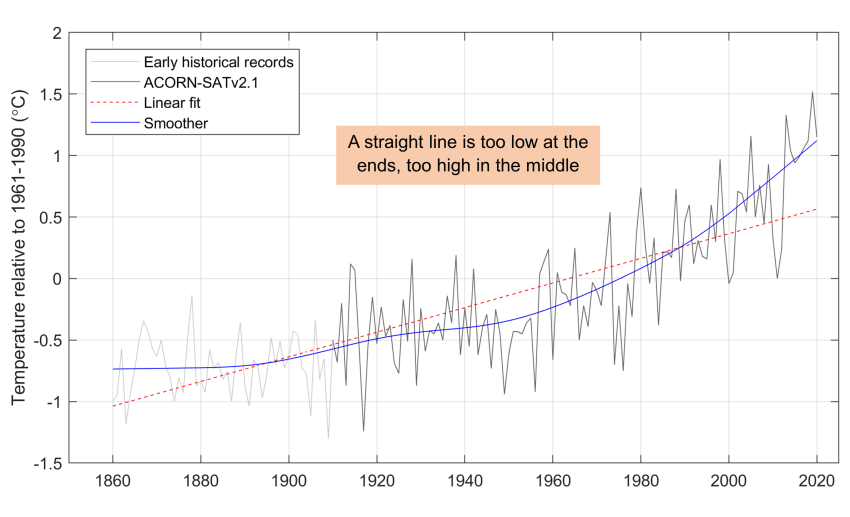
Early historical records are not available for each state and territory and some international datasets have large biases in the early period for some of these regions. Therefore, to give reliable and comparable results for every state and territory, the median change from climate models is used as the central estimate of warming between 1850–1900 and 1910–1930, and this is blended with the high-quality observations. The highest and lowest estimate from any method used (global datasets, early historical records, climate models) is presented as an uncertainty bound.
Changes between historical periods
Australia
Using the methods noted above, climate warming can be shown by differences between various baselines since 1850 in Australian land temperature. The central estimate of the difference between the 1850–1900 period to the 1910–1930 period is 0.21 °C, and this can be added on to observed change since 1910 to give an estimate of change since the earlier baseline period (1850-1900).
Using this method, up to the recent decade Australia has warmed by an estimated 1.6 °C (2011-2020 minus 1850-1900), which is slightly higher but within the uncertainty range of change measured as a linear trend for 1910-2019 (1.44 ± 0.24 °C), and around 1.4x the global average and 0.9x the global land average. Temperature changes for 1850-1900 to 2011-2020 by state are between 1.1 °C in Tasmania to 1.7 °C in South Australia (see below). The values are similar to or slightly hjgher than the linear trend for 1910-2019, with the small differences being the net result of showing warming from an earlier period and using the difference between periods rather than a straight line fit to calculate warming.
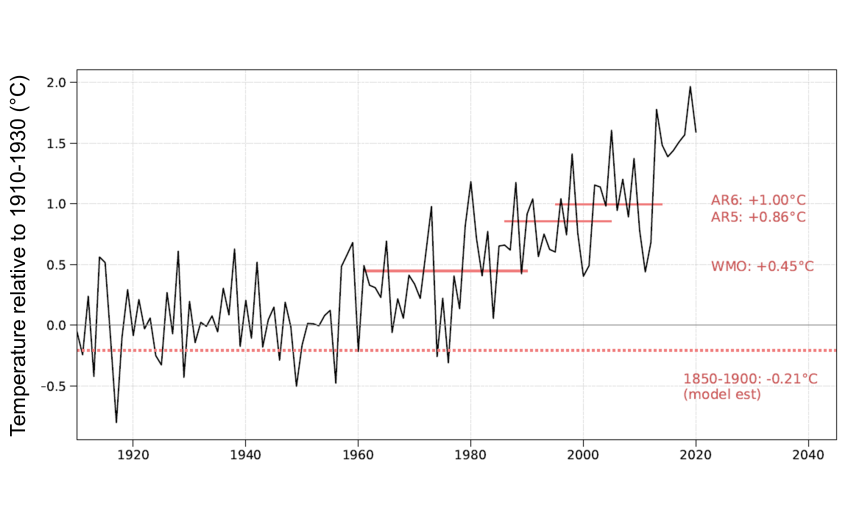
Australian mean annual temperature relative to the 1910-1930 period in the ACORN-SATv2.1 dataset, with the time periods as well as the value of the several other temperature baselines are overlaid (red lines). The periods are:
- WMO = the older World Meteorological Organisation (WMO) baseline of 1961-1990 still widely used
- AR5 = IPCC Fifth Assessment report (AR5) baseline of 1986-2005 (commonly used on this website)
- AR6 = upcoming IPCC Sixth Assessment report (AR6) baseline of 1995-2014
The estimated change between 1850-1900 and 1910-1930 (0.21 °C) can be added on to these values to give an estimate of change since the 1850-1900 baseline, e.g. 0.86 and 0.21 give +1.08 °C between 1850-1900 and 1986-2005.
New South Wales and Australian Captial Territory
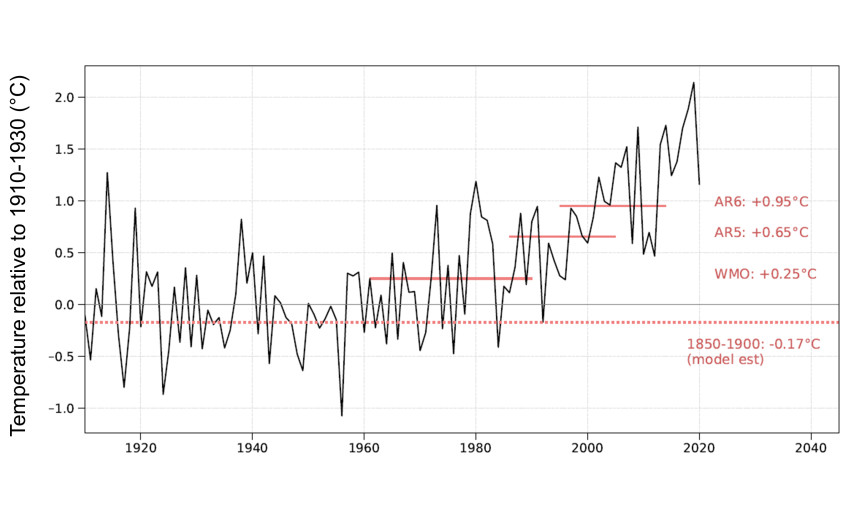
Linear trend 1910-2020: +1.4 °C
Estimated change 1850-1900 to 2011-2020: +1.6 °C
Ratio to global warming: 1.4x
Northern Territory
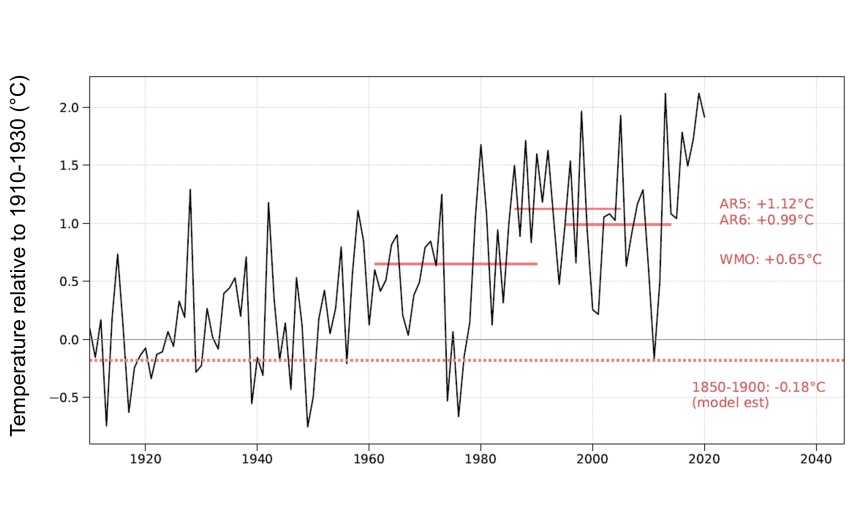
Linear trend 1910-2020: +1.6 °C
Estimated change 1850-1900 to 2011-2020: +1.5 °C
Ratio to global warming: 1.4x
Queensland
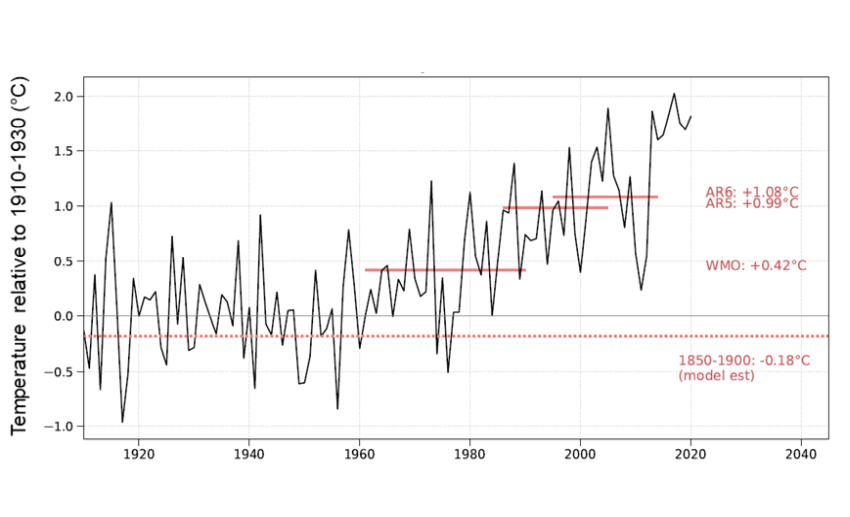
Linear trend 1910-2020: +1.6 °C
Estimated change 1850-1900 to 2011-2020: +1.7 °C
Ratio to global warming: 1.5x
South Australia
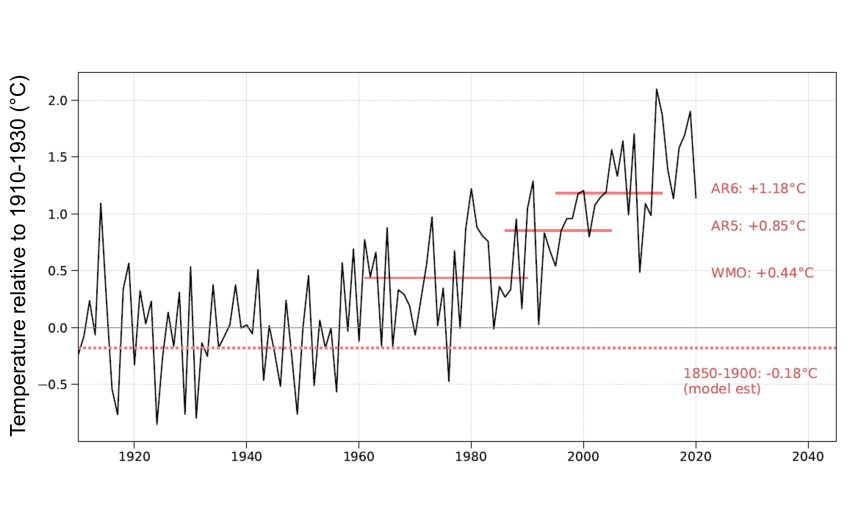
Linear trend 1910-2020: +1.7 °C
Estimated change from 1850-1900: +1.7 °C
Ratio to global warming: 1.5x
Tasmania
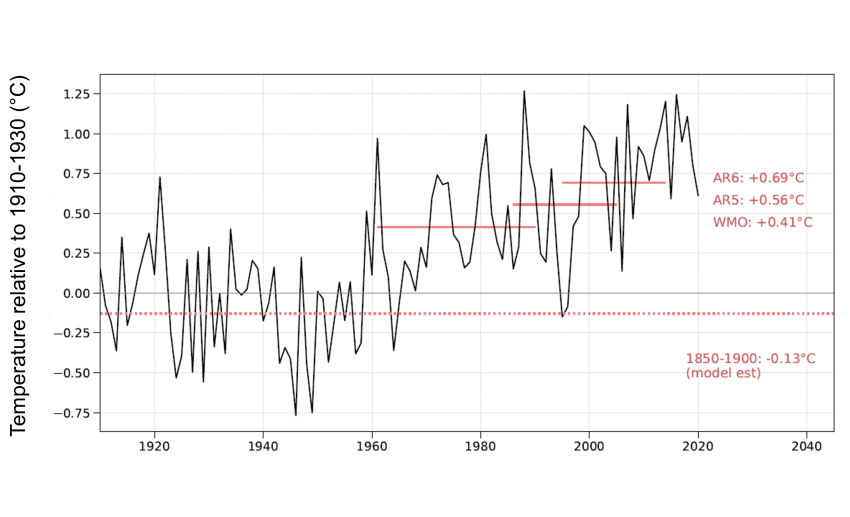
Linear trend 1910-2020: +1.1 °C
Estimated change 1850-1900 to 2011-2020: +1.1 °C
Ratio to global warming: 1.0x
Victoria
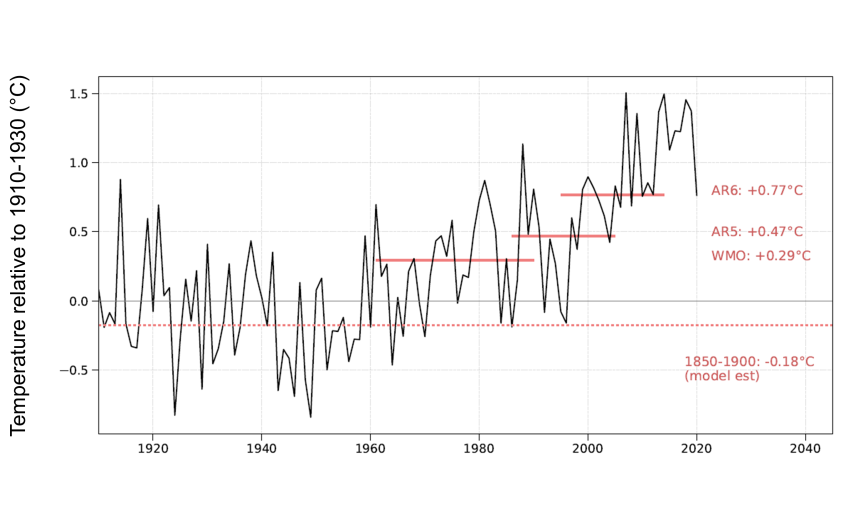
Linear trend 1910-2020: +1.2 °C
Estimated change 1850-1900 to 2011-2020: +1.4 °C
Ratio to global warming: 1.2x
Western Australia
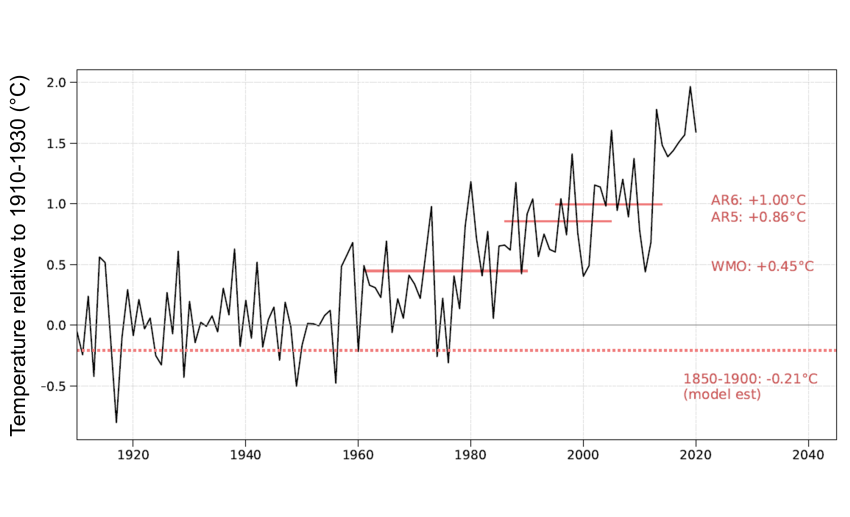
Linear trend 1910-2020: +1.3 °C
Estimated change 1850-1900 to 2011-2020: +1.5 °C
Ratio to global warming: 1.4x
The periods are:
- WMO = the older World Meteorological Organisation (WMO) baseline of 1961-1990 still widely used
- AR5 = IPCC Fifth Assessment report (AR5) baseline of 1986-2005 (commonly used on this website)
- AR6 = IPCC Sixth Assessment report (AR6) baseline of 1995-2014
For NRM Super-Clusters
See Super-Clusters for details on these regions.
Page last updated 19th November 2021
